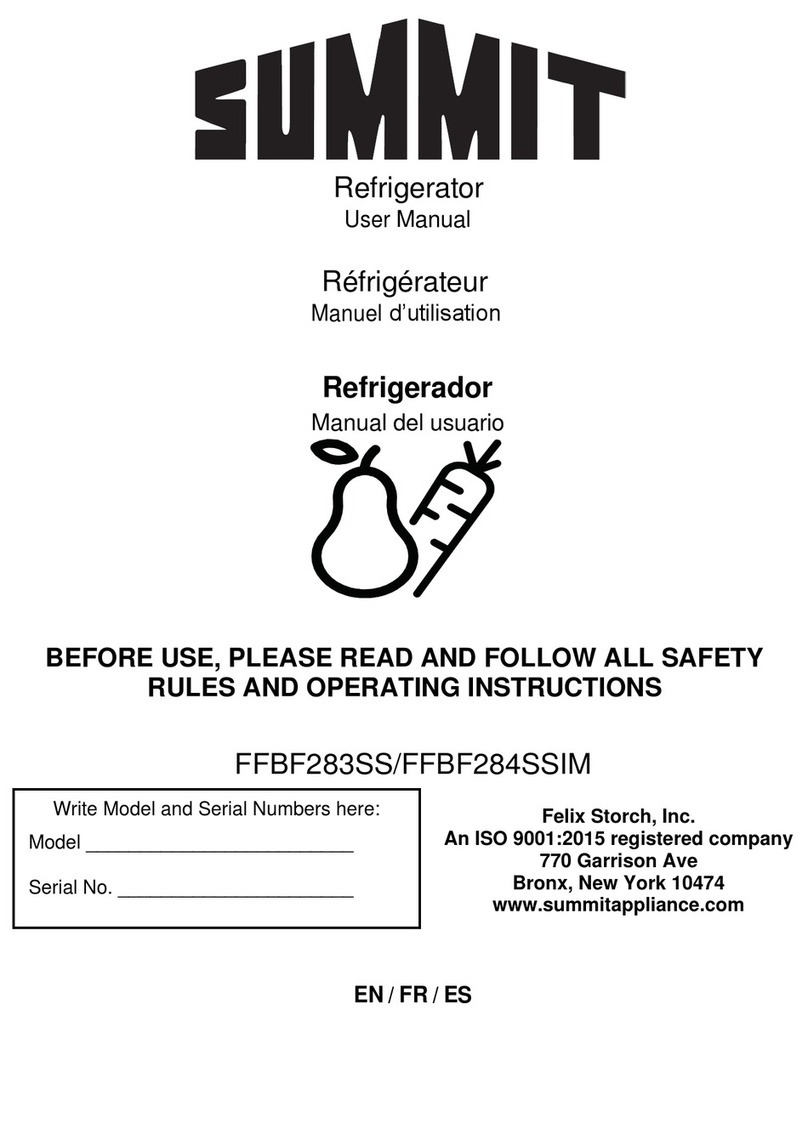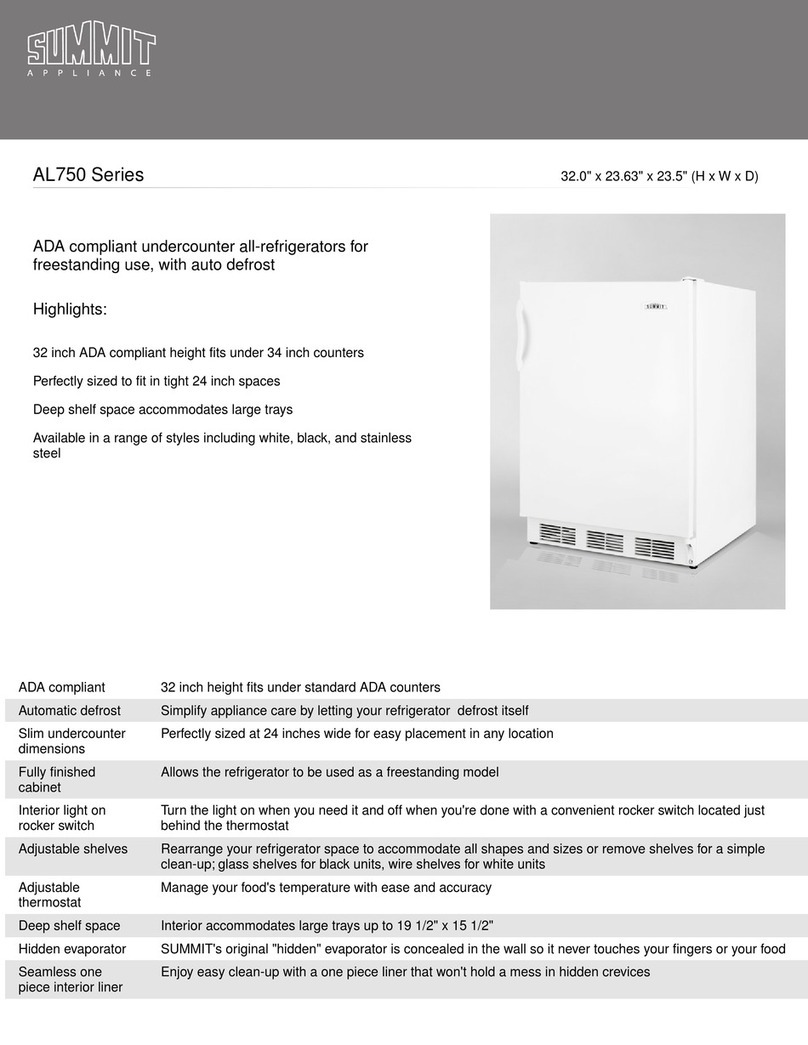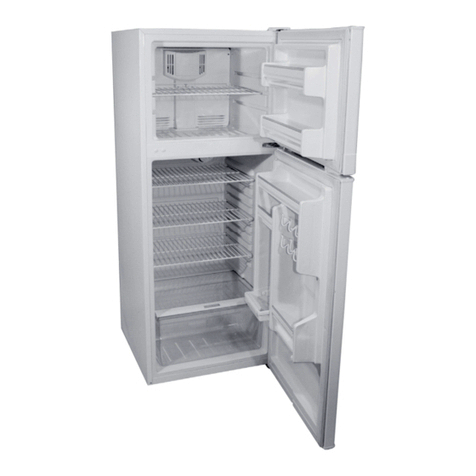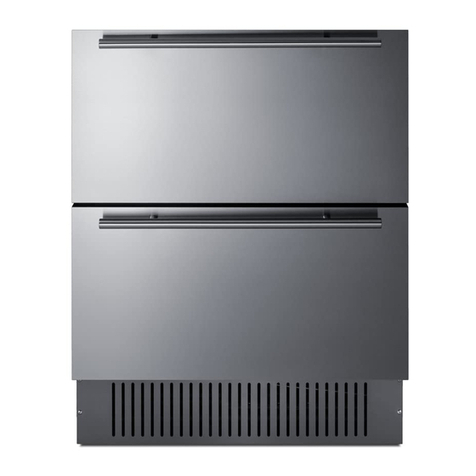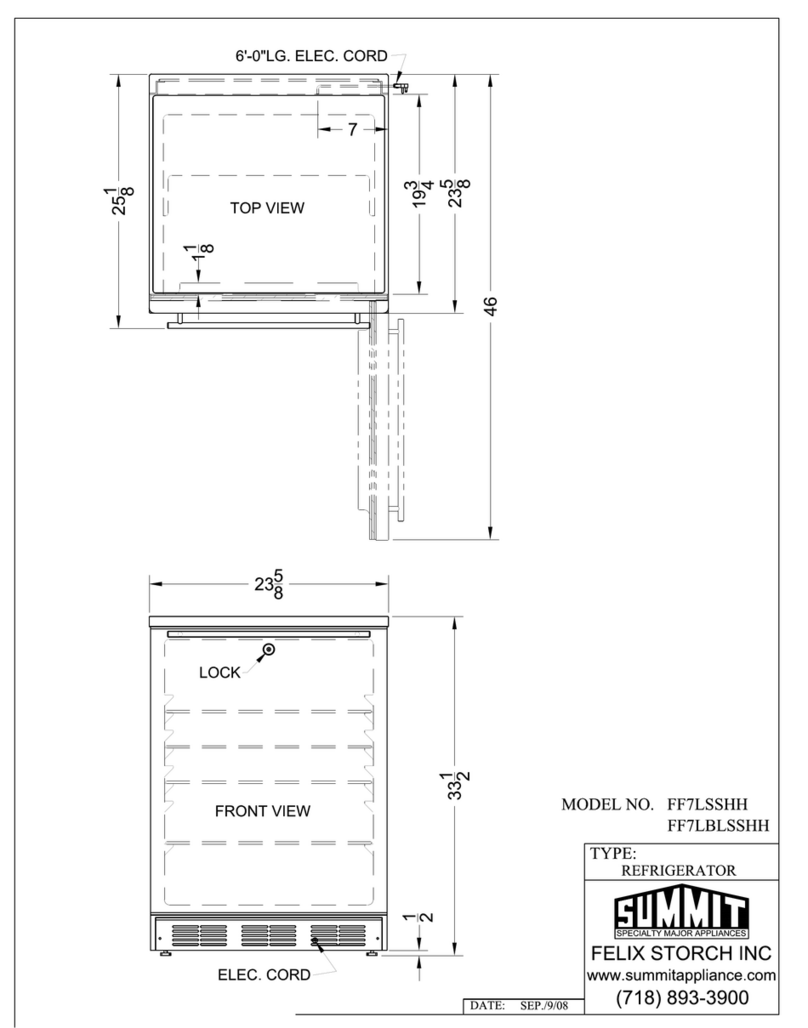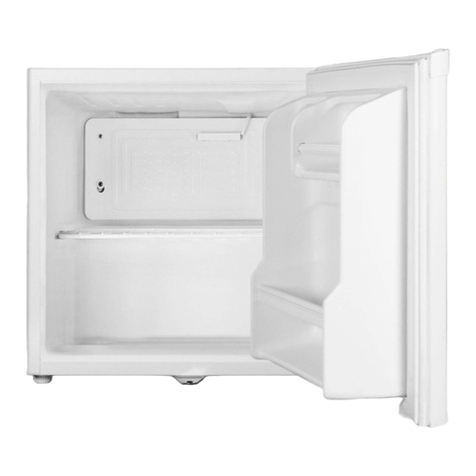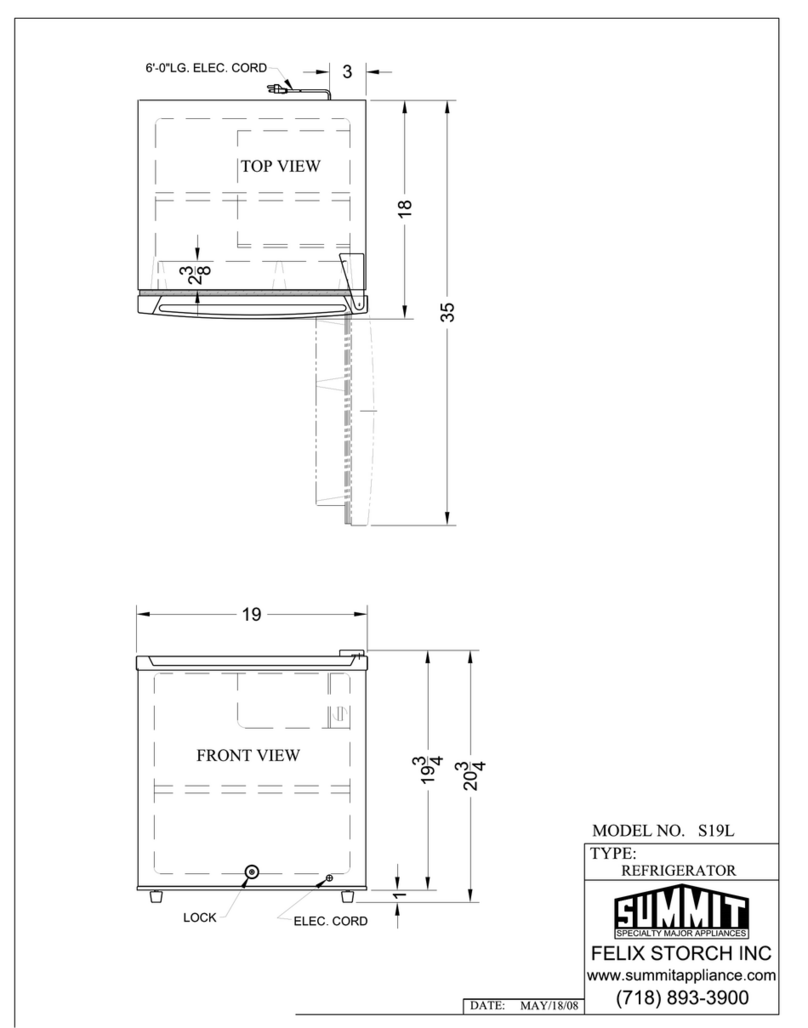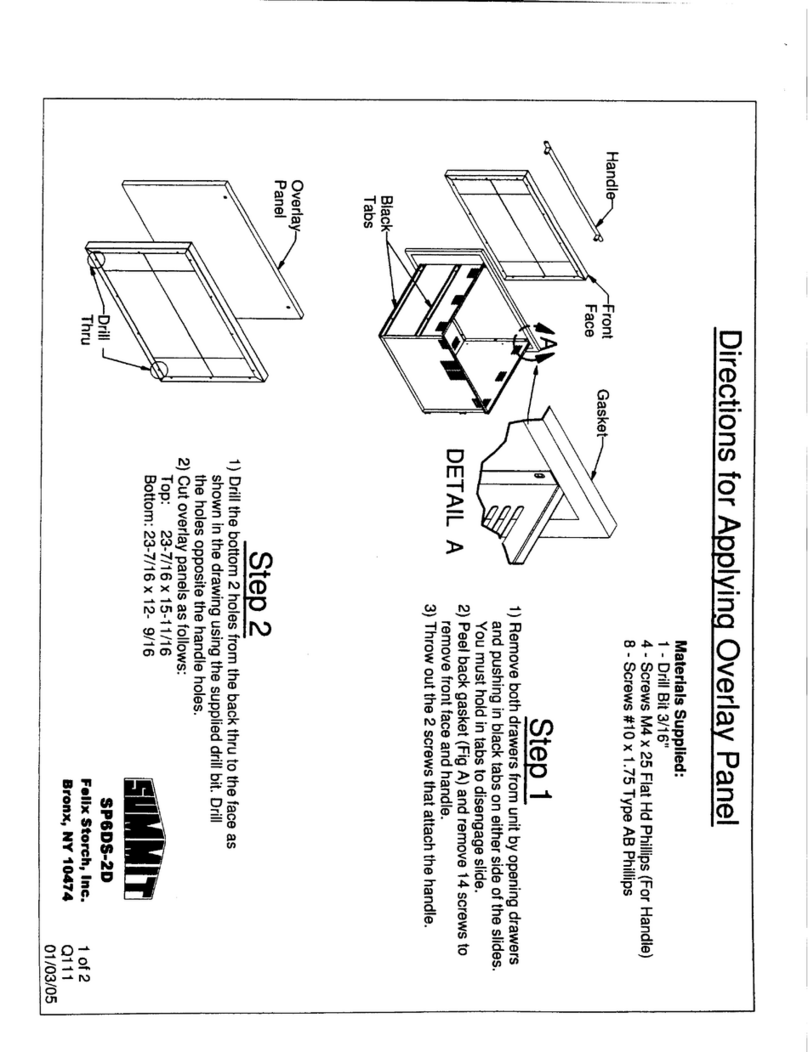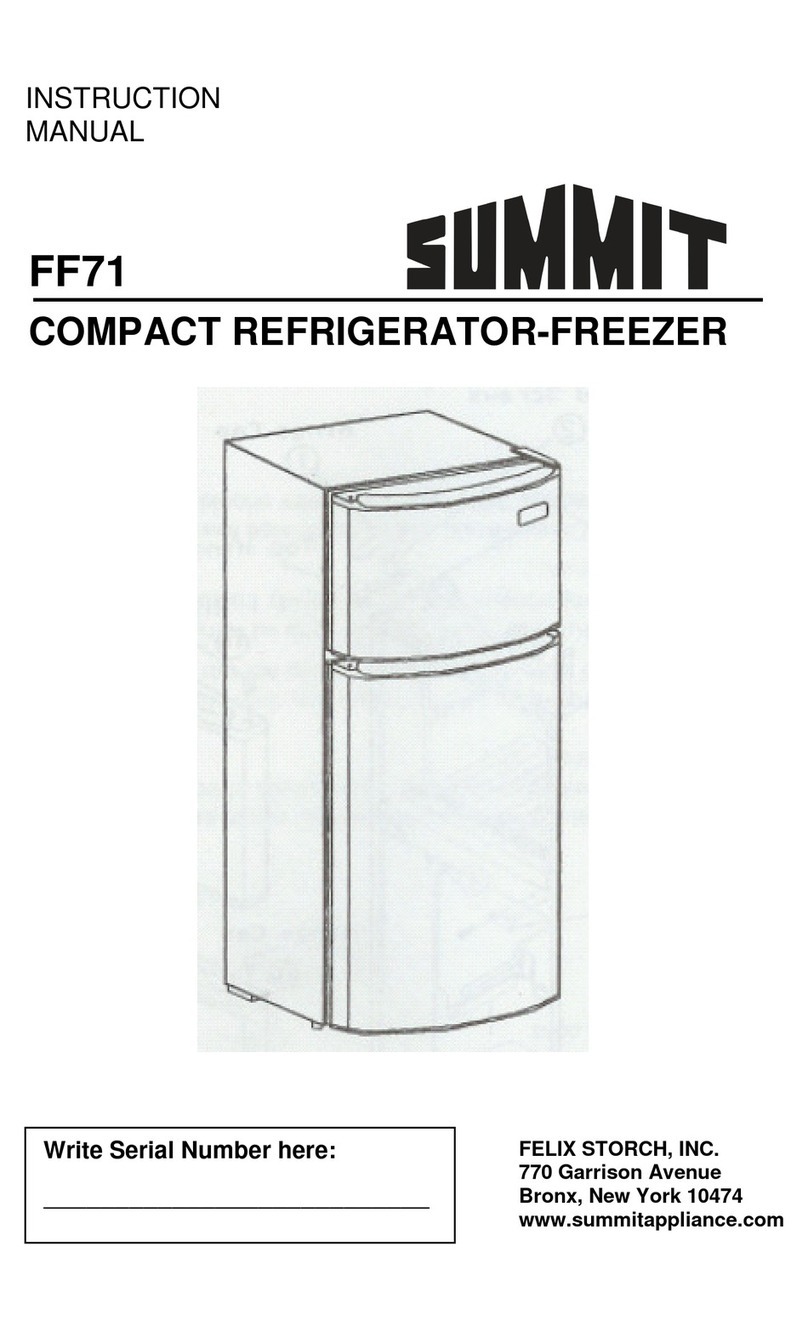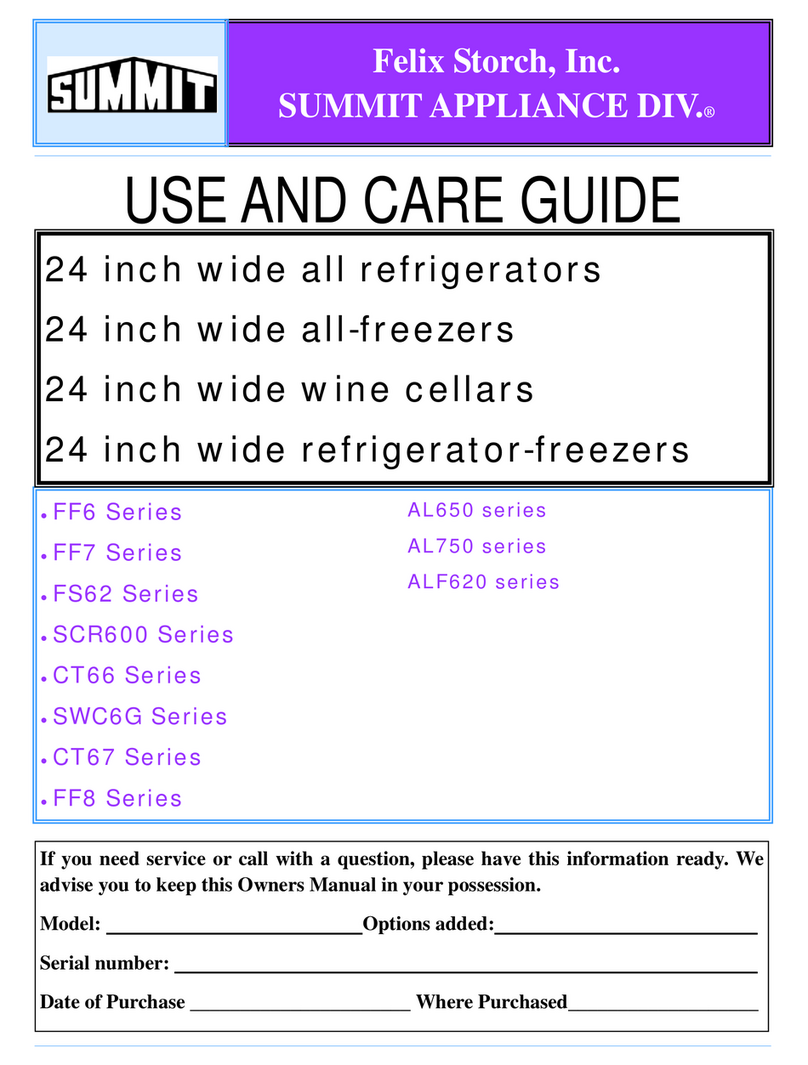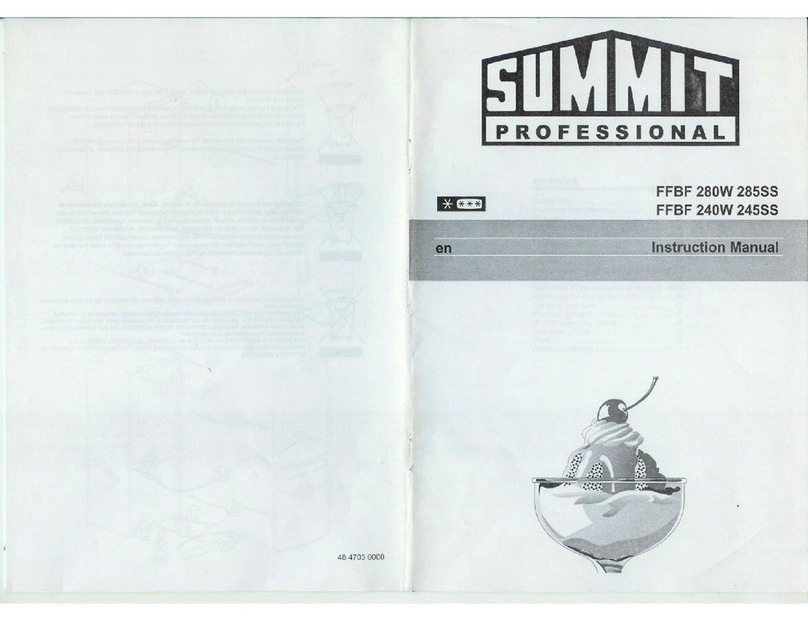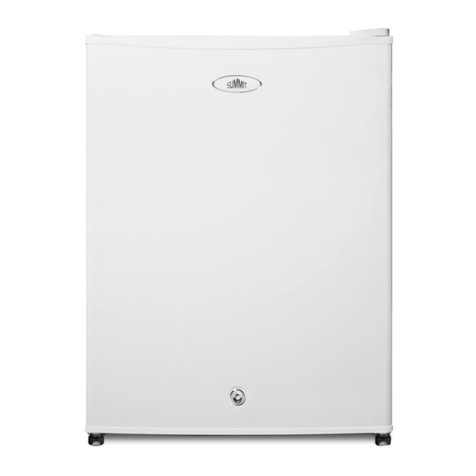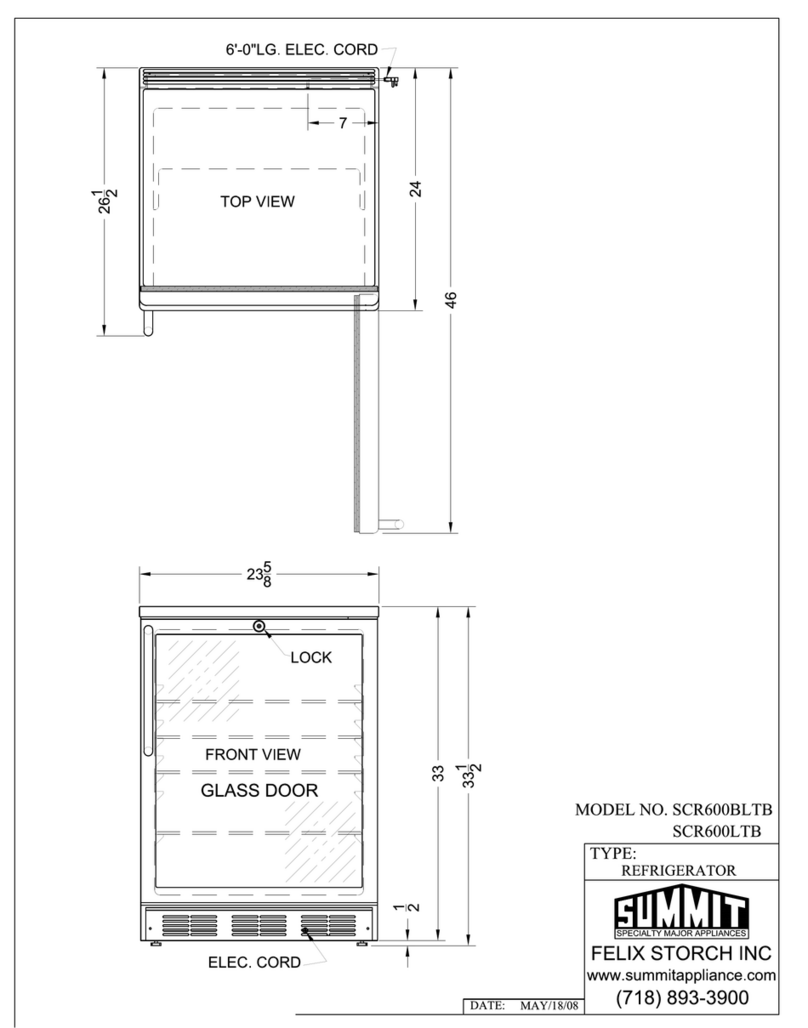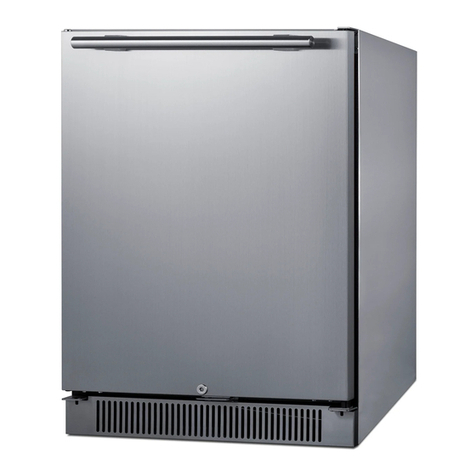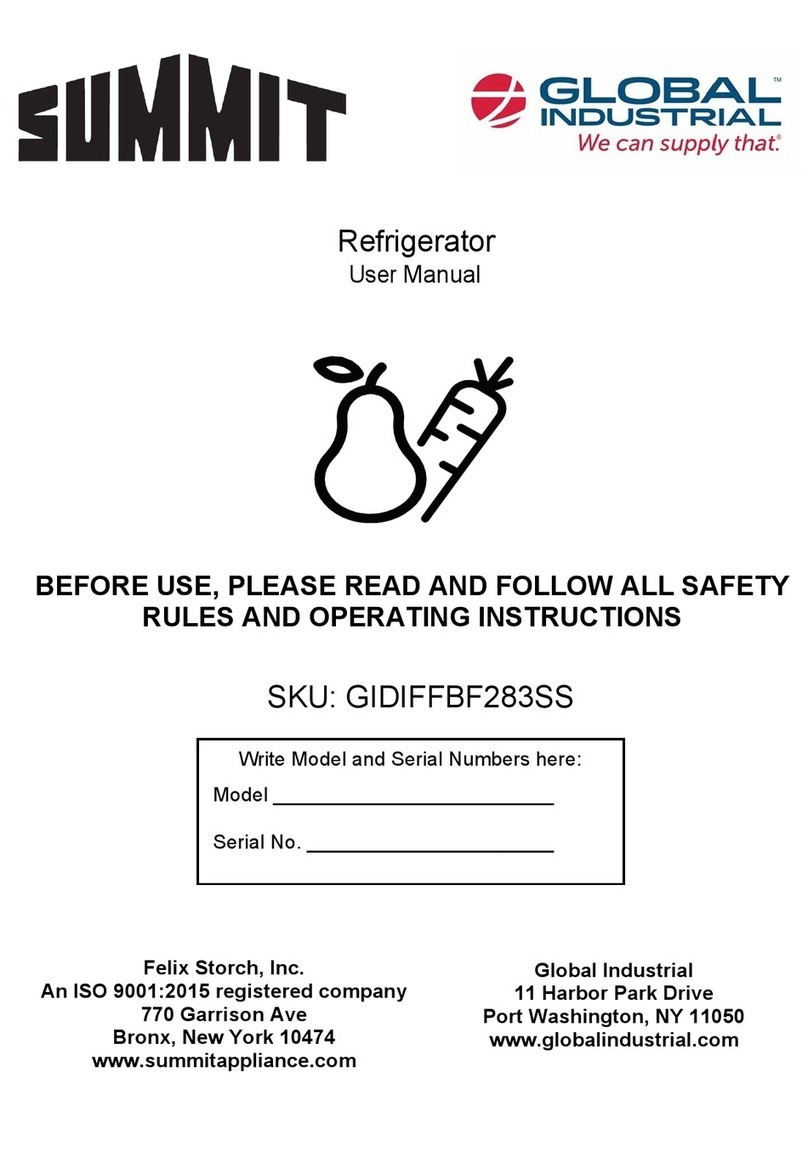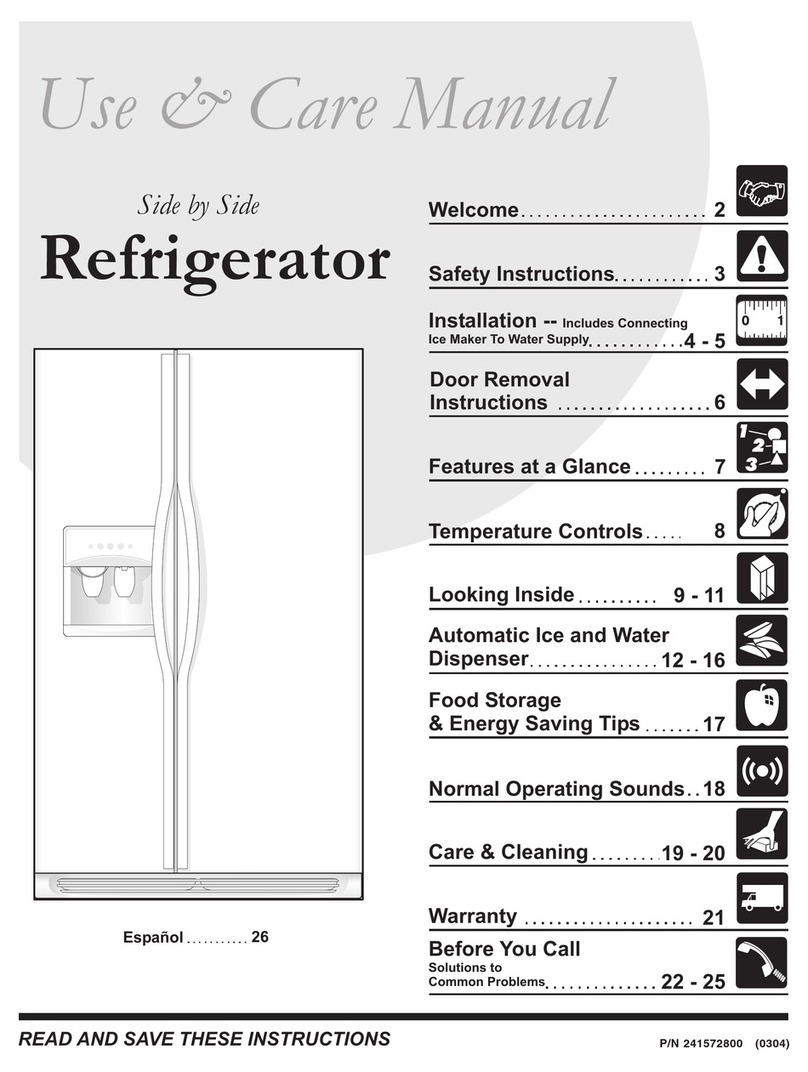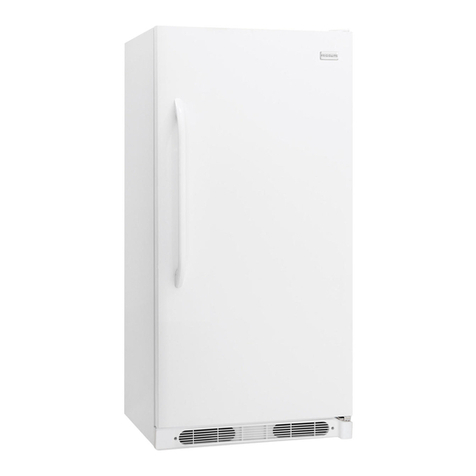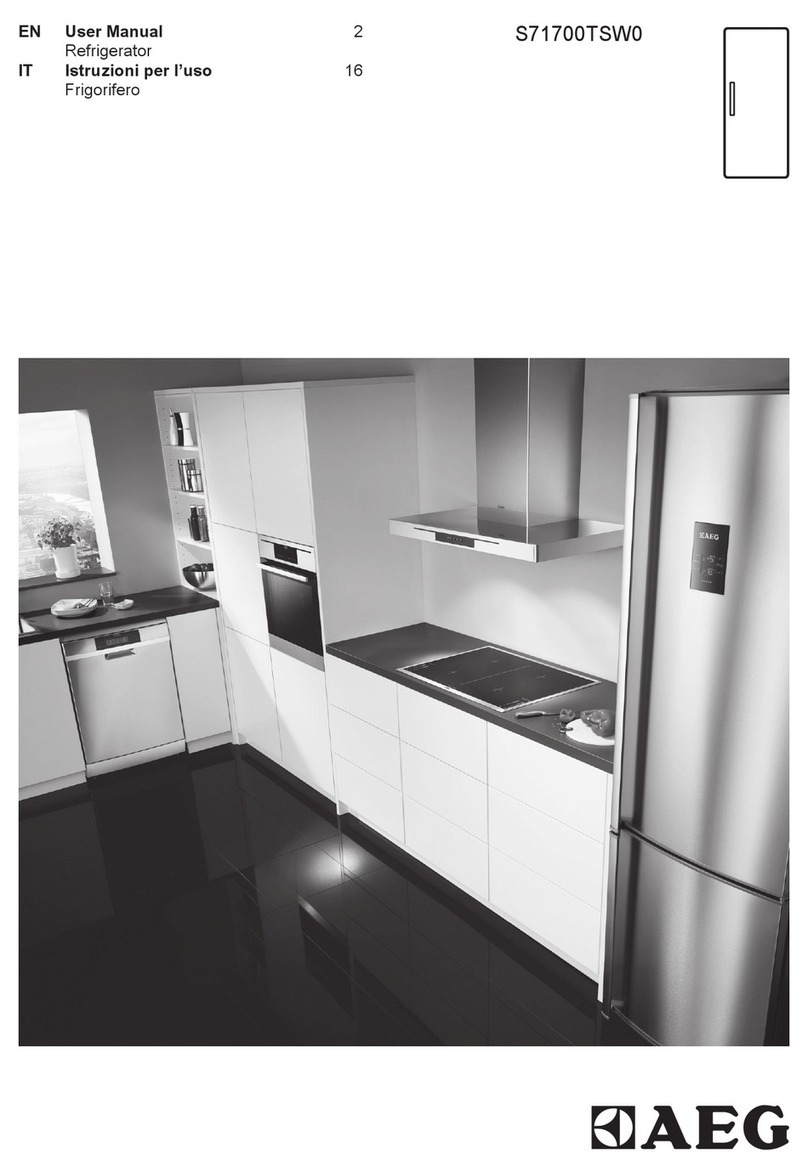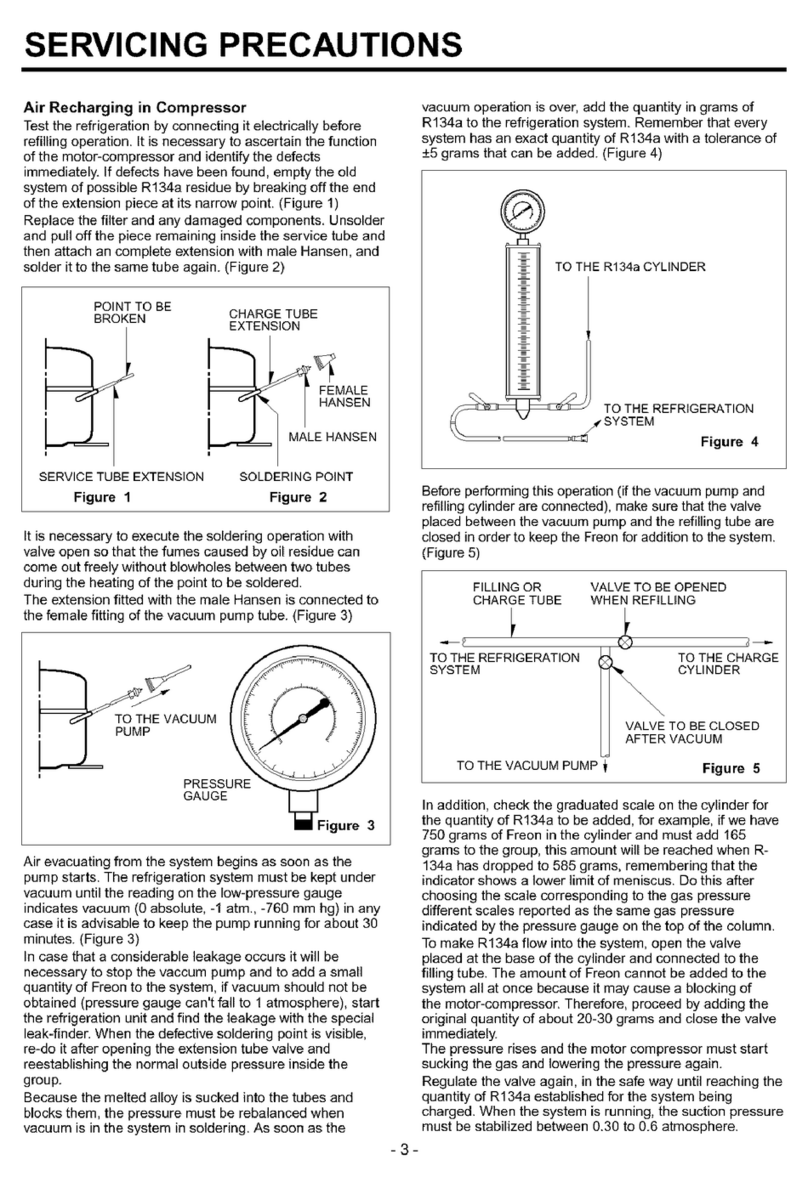
Ãdiusting the Ðoor
L Locate the two front leveling legs taped among the packing materi-
als.
2. Screw these legs into the front holes on the bottom of the refrigera-
tor. The back of the refrígerator rests on two fixed supports.
3. lldjust the front tegs just enough to tift the cabinet up off of the floor.
NOTE: If your model is equipped with rollers, the front legs should be
lowered enough to lift the rollers off of the floor to ensure the refrig-
erator does not roll forward when the door is opened.
4. Place a leveling tool on top of the refrigerator first side to side, then
front to back. Turn leg counterclockwise to raise a corner. Turn leg
clockwise to lower a corner.
5. Repeat Step 4 until refrigerator is level.
6. After refrigerator is fully loaded, recheck with level as in Step 4.
REFRIGERJTTOR USE
In order to ensure proper temperature, you need to permit proper
airflow in the refrigerator. .A.s shown in the illustration, cool air enters
through the refrigerator wail and moves down. The air then re-
circulates through the vent near the bottom.
Do not block any of these vents. If the vents are blocked, airflow will
be prevented, and temperature and moisture problems may occur.
.Allow the refrigerator to cool 6 to I hours before filling. Never add
more than 2 to 3 lbs (907 to 1,350 g) of material per cubic foot (28.32 L)
of refrigerator space.
NOTE: When the refrigerator is first started, the compressor will run
constantly until the refrigerator is cooled, It may take up to 6 or B
hours (or longer), depending on room temperature and the number of
times the refrigerator door is opened. AJter the refrigerator is cooled,
the compressor will turn on and off as needed to keep the refrigerator
at the proper temperature.
The outside of your refrigerator may feel warm. This is normal. The
refrigerator's design and main function is to remove heat from pack-
ages and air space inside the refrigerator. The heat is transferred to
the room air, making the outside of the refrigerator feel warm.
5
